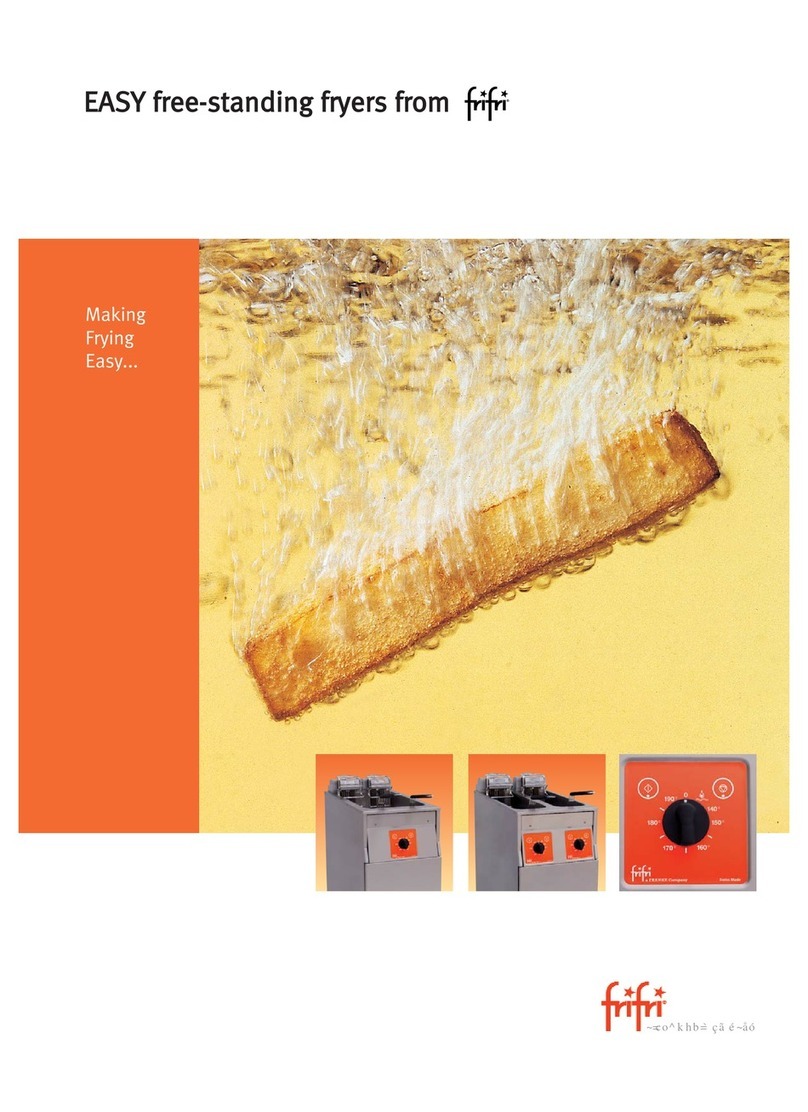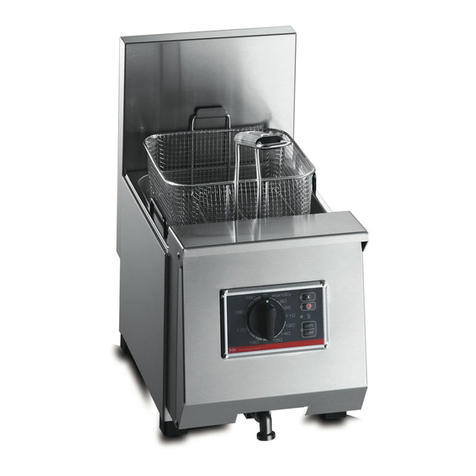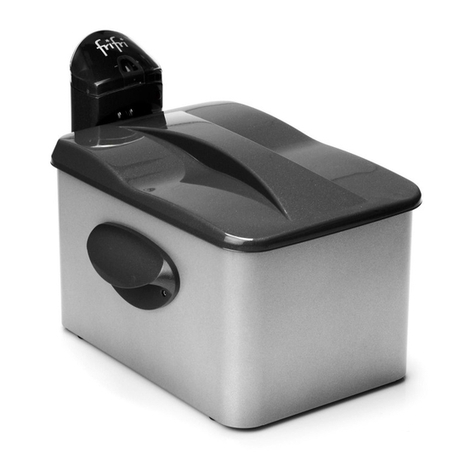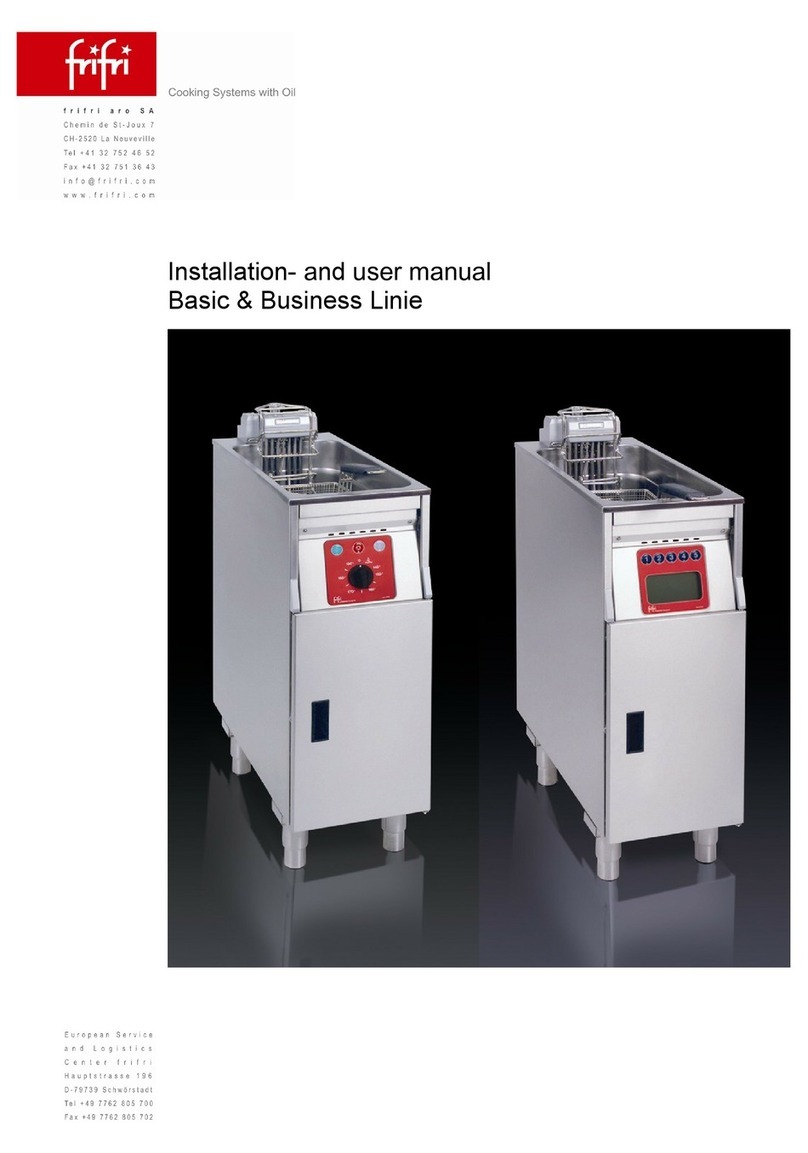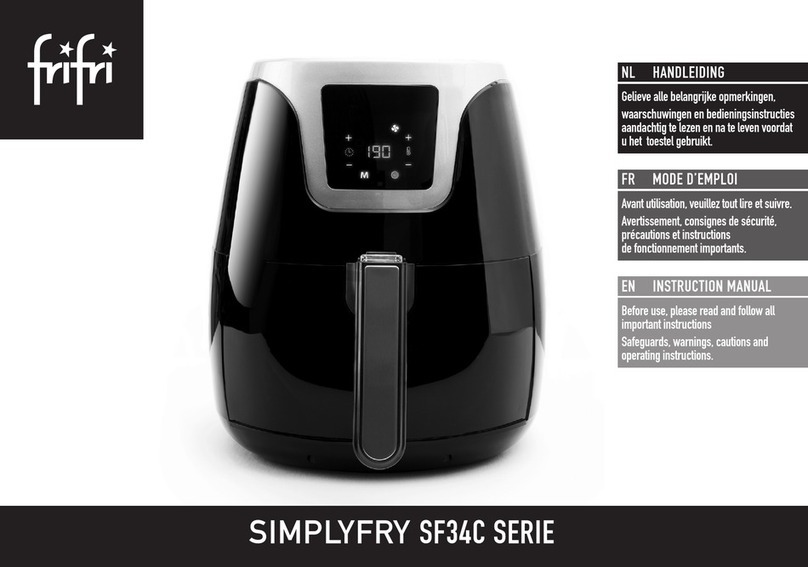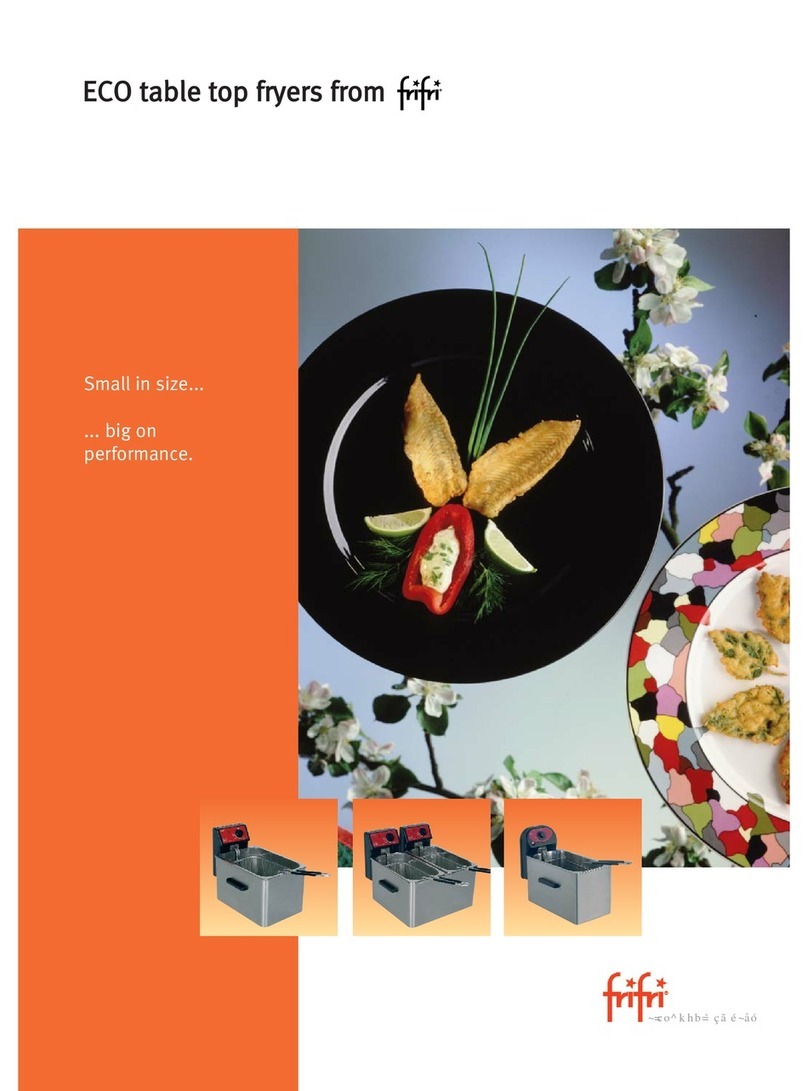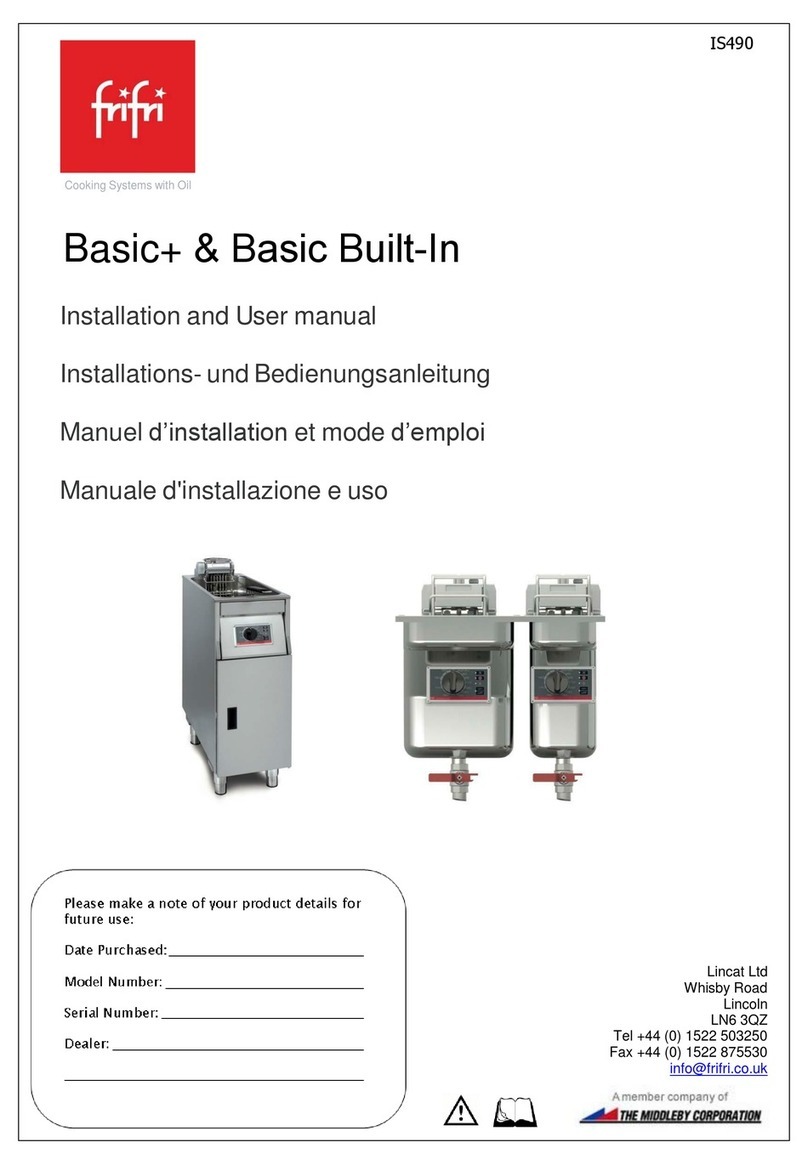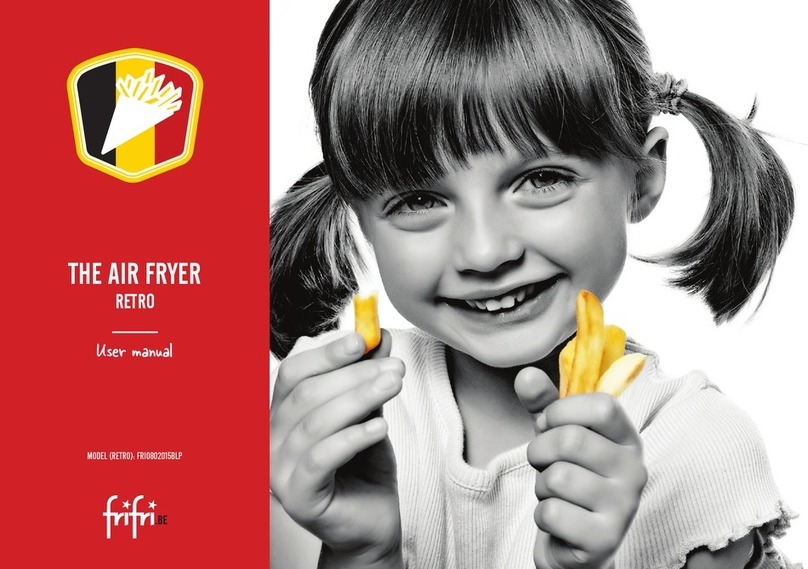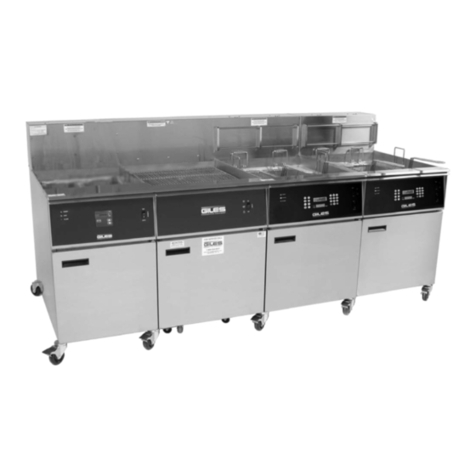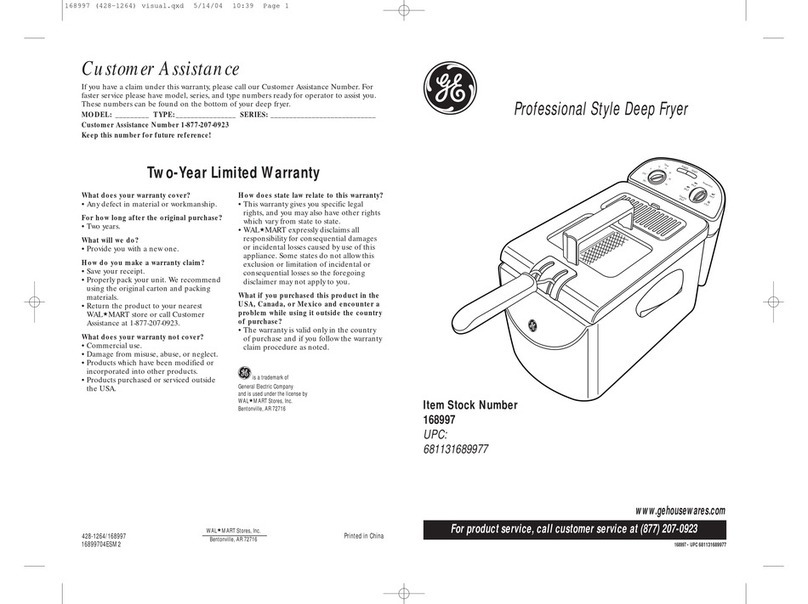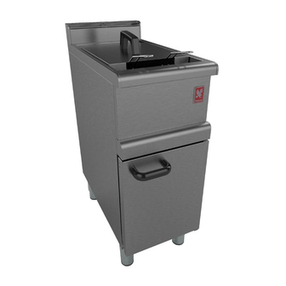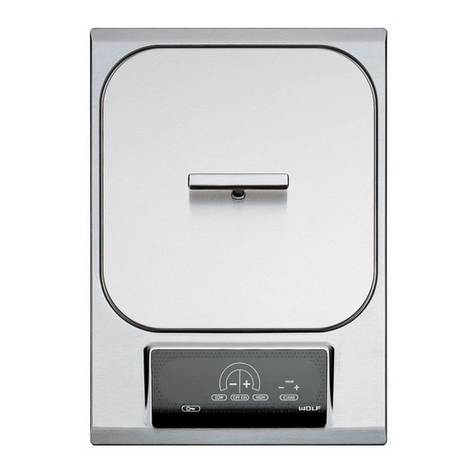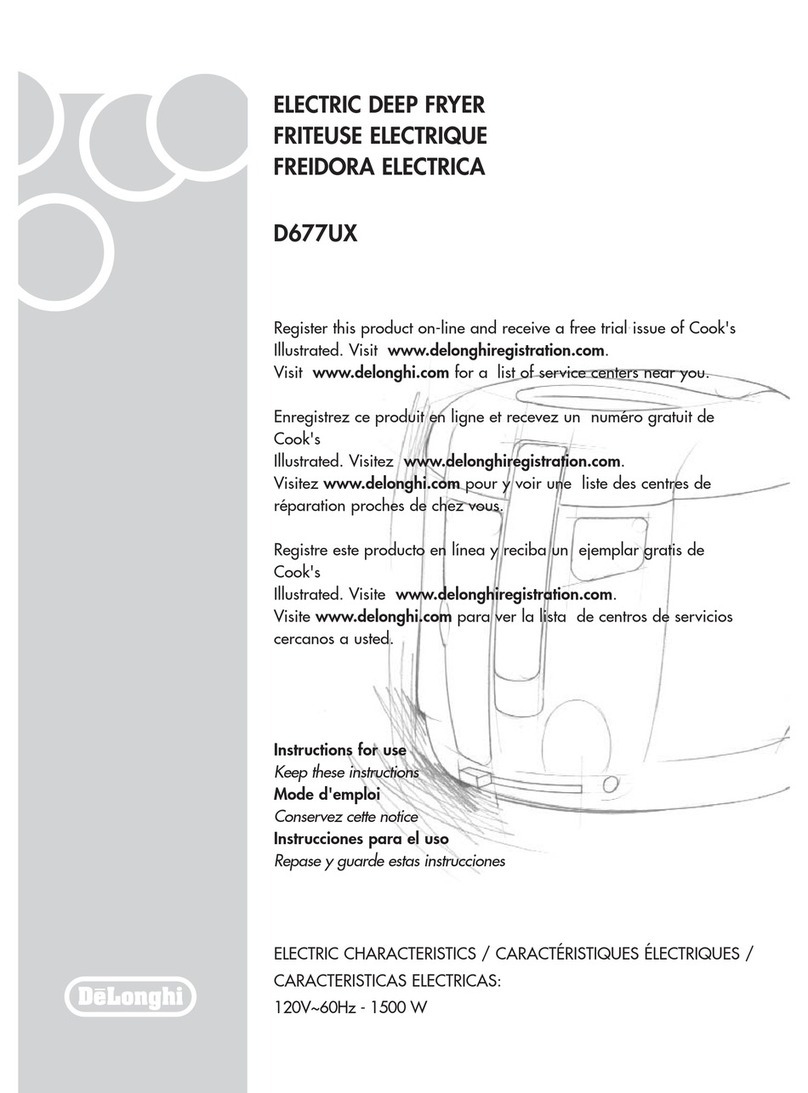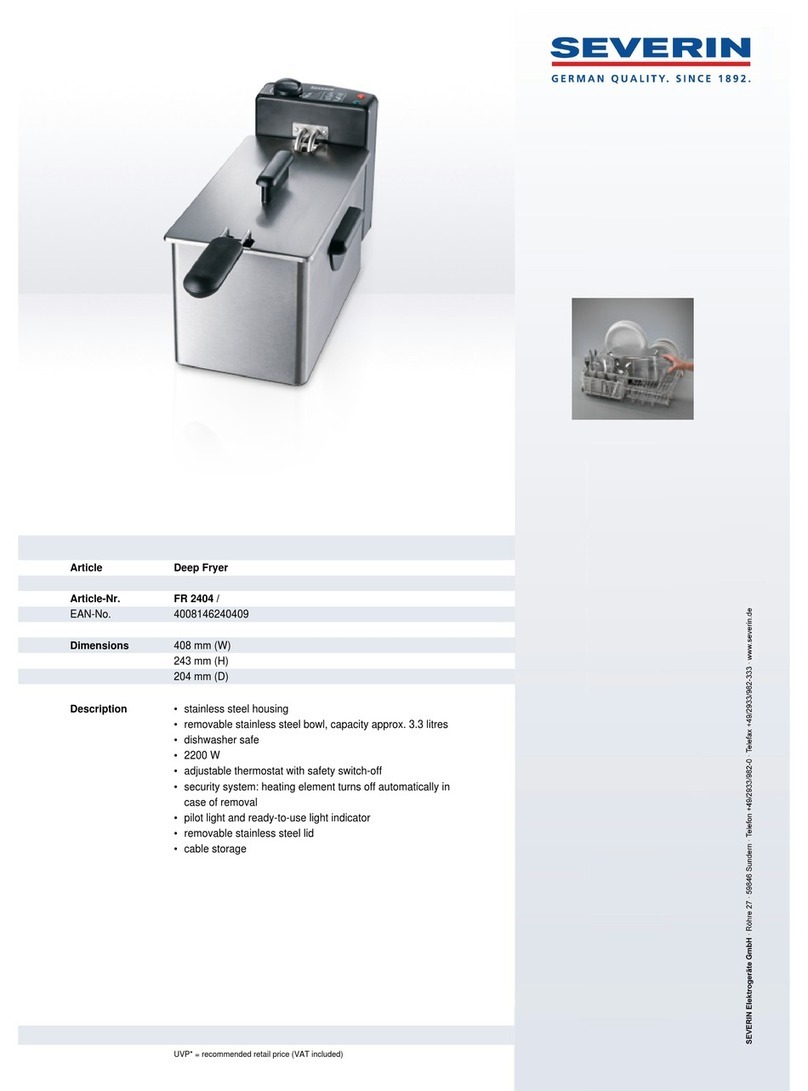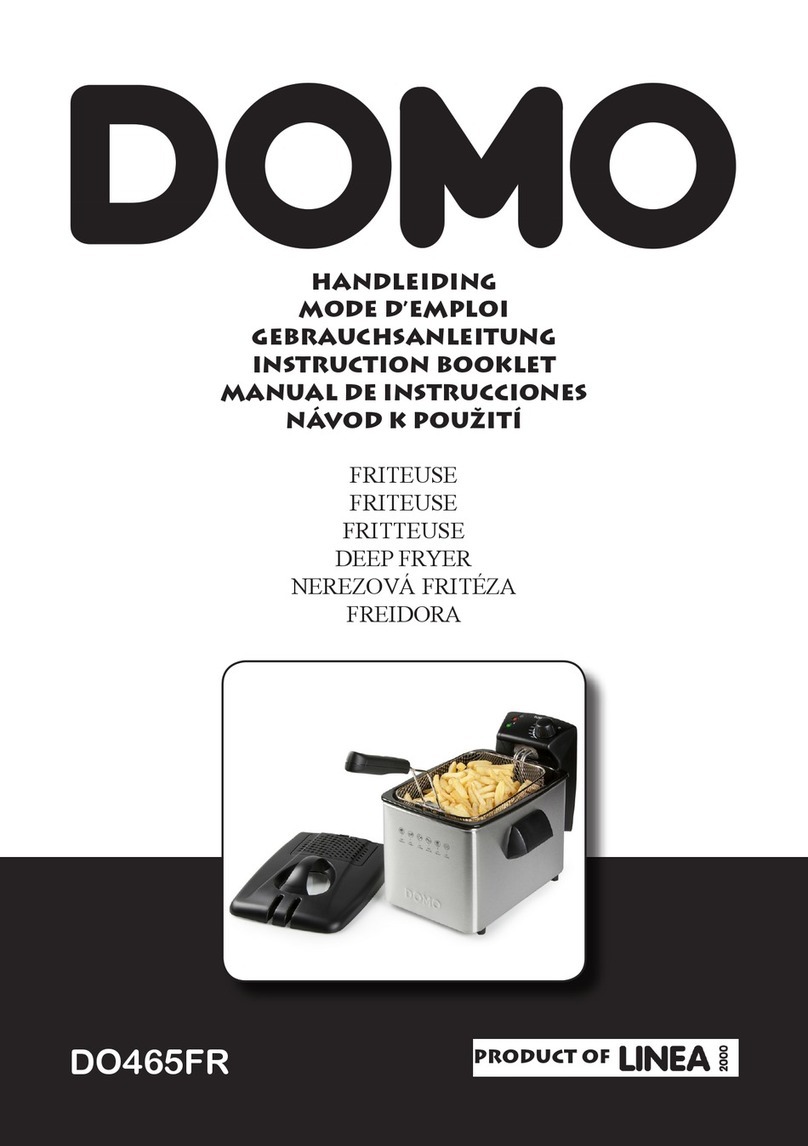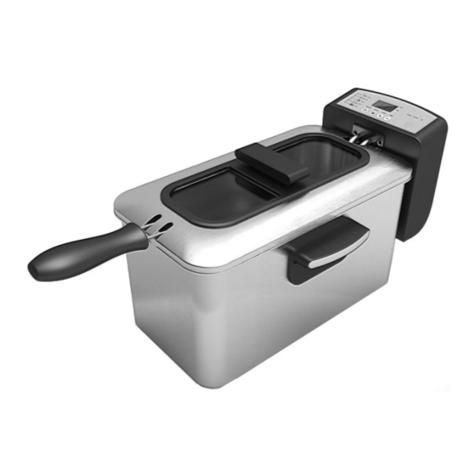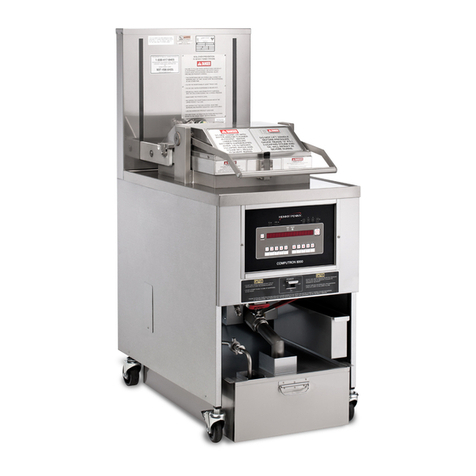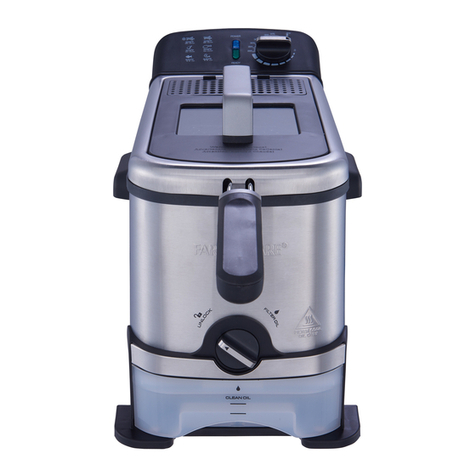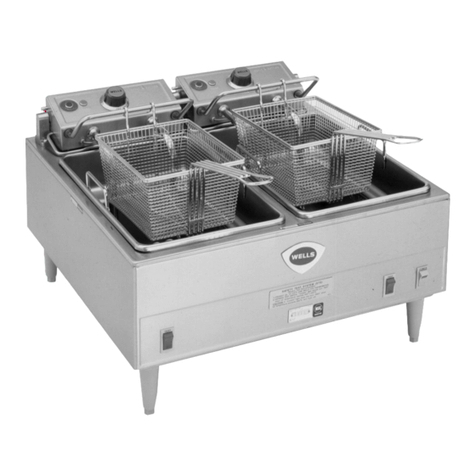
Frying
Put the food into the basket. When using frozen products, shake them well first (not over the fryer) to remove ice
crystals etc.
Place the basket into the oil
As soon as the food is sufficiently fried, raise the basket and hook it over the tank to drain.
During long breaks between frying, switch off at the mains supply and remove the plug.
Note:
Only half-fill the basket. ECO4 = 500 g, ECO6 = 750 g
Be aware that both overfilling and the use of wet products (e.g. frozen food coated with ice) will make the oil foam and
reduce the quality of frying –treat batch sizes accordingly.
Precaution
As a precaution against fire caused by inflamed fat, suitable safeguards such as extinguishers (Halon) or an anti-fire
blanket, should be kept at hand. Never use water to extinguish the flames.
Note that dirty oil will catch fire more quickly and can also cause foam to overflow.
Important:
- The fryer should be constantly supervised.
- Do not switch on the fryer if the oil container is empty.
- After use, switch off the fryer and wait for the oil or fat to cool down before replacing the lid.
- To transport the fryer:
Switch off and allow to cool. Remove the plug, grasp both sides of the fryer - Fig 1 (4) firmly and raise it carefully.
Maintenance
Before carrying out maintenance tasks, unplug the fryer and allow it to cool.
Filtering oil or fat
The oil or fat should be filtered daily as follows:
1. Cool the oil temperature to a maximum of 50°C.
2. Remove basket.
3. Remove the control box- Fig 1 (5).
4. Remove the oil tank.
5. Filter, and then pour the oil or fat back into its container and, if necessary, fill up to the MAX level.
6. Refit the control box.
Important:
Used oil should be disposed of according to the local regulations and should on no account be poured down the drain.
Cleaning
Regular cleaning will make your fryer last longer and improve the quality of the fried food. The fryer should therefore
be cleaned daily as follows:
1. Isolate the appliance from the mains. Remove the basket. Take out the control box with the heating elements,
remove the oil tank and empty it.
2. Clean the heating elements –Fig 1 (8) with warm water and a mild detergent.
Important:
Never use a water jet or steam cleaner and do not immerse this appliance.
Clean the heating elements with à normal soft brush. Take care to avoid damaging the thermostat probes.
After-sales service
Should you have any problems with your fryer, contact your supplier. Before doing so, firstly check the following
points:
1. Has the mains fuse blown ?
2. Is the mains plug plugged in ?
3. Is the mains cable in good order ?
4. Check the safety thermostat at the rear of the appliance –Fig 1 (9). This can cut out for the following reasons:
- Not enough oil or fat in the container.
- The heating elements were switched on for too long when melting fat.
To re-set the safety thermostat:
- Let the oil or fat cool down to about 170°C.(Note: The safety thermostat will not
re-set unless the oil has cooled to this temperature).
- Press the red button in as far as the stop.
5. Is the control box seated correctly so that the safety switch is engaged –Fig 1 (10)?
